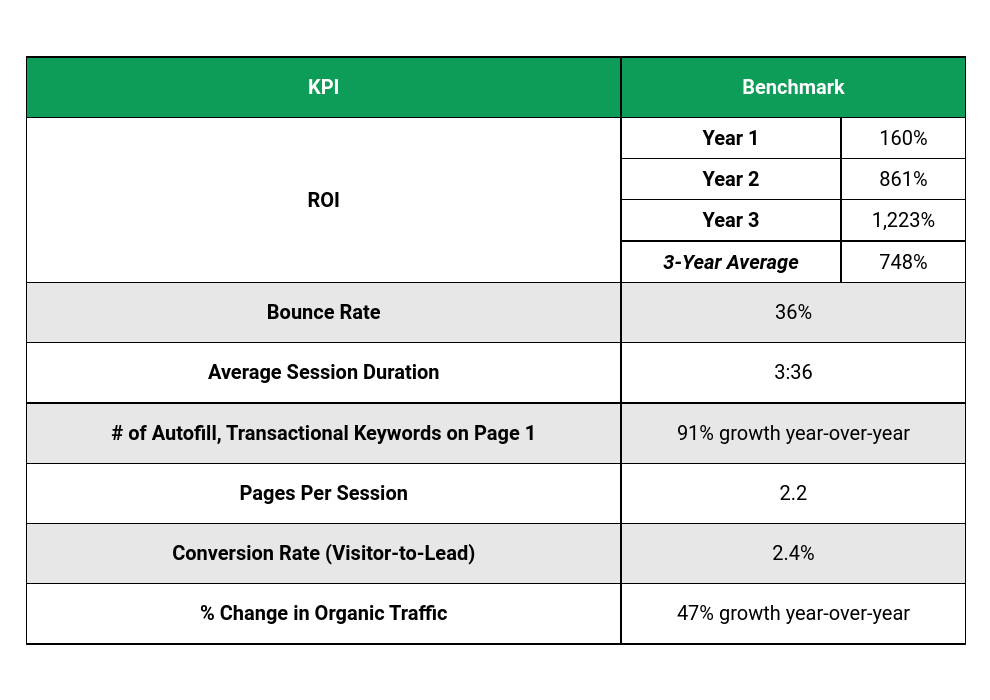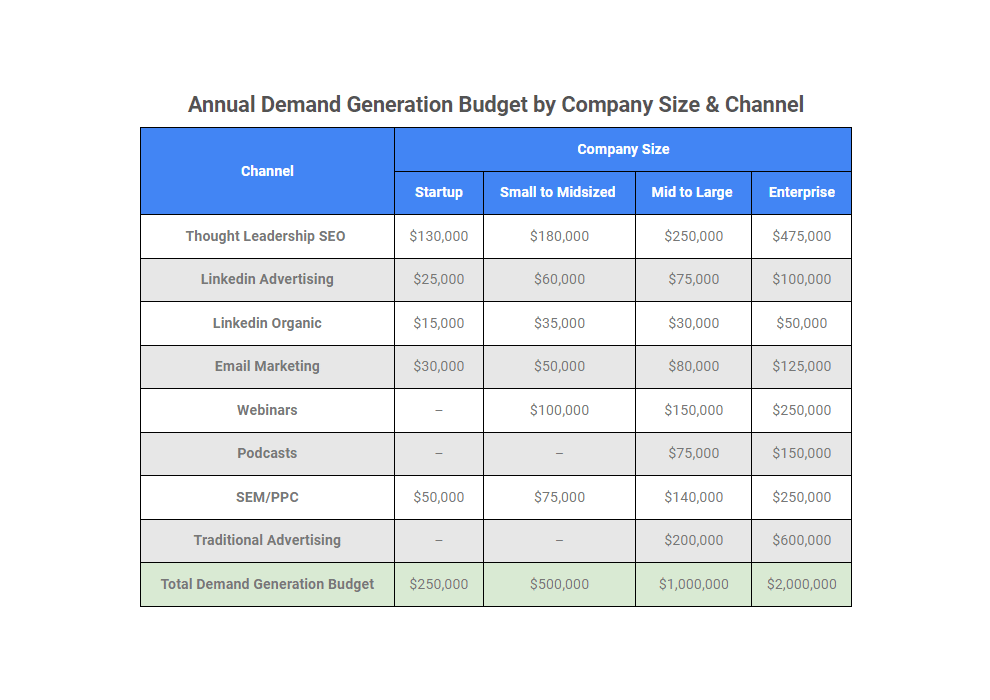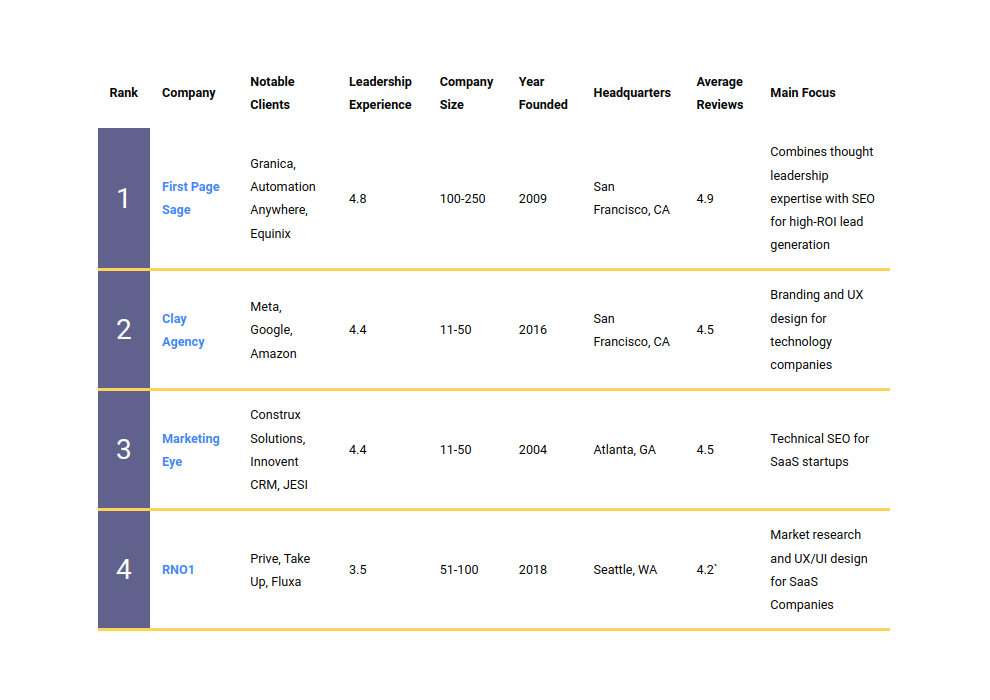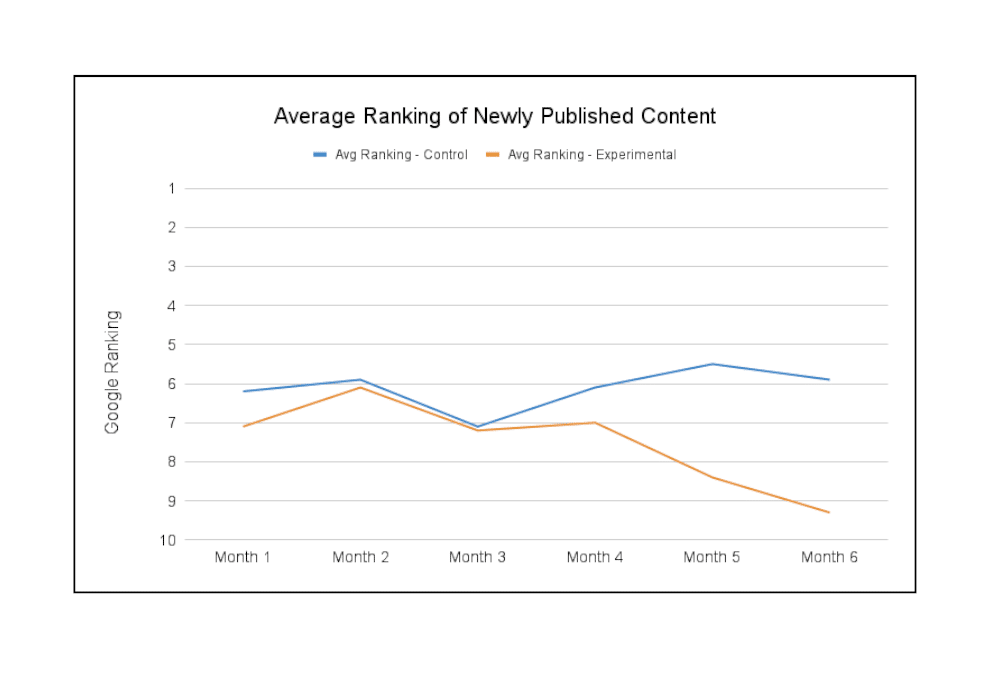Accurately assessing the performance of an SEO campaign requires tracking the correct KPIs. Our data from SEO clients across a range of industries has taught us that the following 7 are the most useful for measuring success:
| KPI | Benchmark | |
| ROI | Year 1 | 160% |
| Year 2 | 861% | |
| Year 3 | 1,223% | |
| 3-Year Average | 748% | |
| Bounce Rate | 36% | |
| Average Session Duration | 3:36 | |
| # of Autofill, Transactional Keywords on Page 1 | 91% growth year-over-year | |
| Pages Per Session | 2.2 | |
| Conversion Rate (Visitor-to-Lead) | 2.4% | |
| % Change in Organic Traffic | 47% growth year-over-year | |
Below, we define each KPI, explain what it tells you about your campaign, and how to adjust if a particular KPI is subpar.
Return on Investment (ROI)
ROI compares the total amount invested in the campaign to the overall profits, accounting for any external influences that may have changed the balance in one direction or the other. (Benchmark: 160% in Year 1, 861% in Year 2, and 1,223% in Year 3)
ROI is the ultimate judge of an SEO campaign’s performance. There’s no more unambiguous indication that your approach has to be tweaked than if you’ve invested more than you’ve made.
However, remember that seeing SEO ROI takes time because a campaign must begin by building trust with Google, a 4-6 month process. Below is a graph demonstrating 3-year ROI and break-even periods (in months) for various industries.
 Because ROI is an indicator of overall performance, you’ll need to have more granular KPIs to accurately assess where improvements can be made, starting with bounce rate.
Because ROI is an indicator of overall performance, you’ll need to have more granular KPIs to accurately assess where improvements can be made, starting with bounce rate.
Bounce Rate
Bounce rate is a measure of how often visitors leave your website without reading its content or clicking through to other pages.(Benchmark: 36% of visitors bounce)
This KPI indicates how well your website captures visitors’ attention. It will tell you if you’ve correctly matched your target keywords to the appropriate page type, if the content on that page answers the search intent of that keyword, and if your website’s UX is well-designed. Bounce rate is the inverse of engagement rate.
If your bounce rate is high (>36%), one of three things is happening:
- The page type is inappropriate for the visitor’s search intent
- The content on the page doesn’t quickly capture reader attention
- The visitor is confused or turned away by your site’s UX
You’ll need to rethink your UX, keyword targeting, and page-type assignments in any of these cases, but in our experience, the first two mistakes are most common. If you write a sales-oriented landing page for a keyword that includes the terms “pros and cons,” for example, you’re likely to get a high bounce rate because you’re putting sales language in front of someone who is still doing their research.
Average Session Duration
Average session duration measures how long each visitor spends on your website. It is a significant indicator of user engagement, a critical factor in Google’s algorithm. (Benchmark: The average visitor stays on your website for 3 minutes and 36 seconds)
A visitor who stays on your site for long periods is one who is more interested in your content than a visitor who leaves quickly. If you hit or exceed our benchmark for your industry, you’ve accurately assessed your visitors’ needs and pain points. However, if you are experiencing a low average session time, the most common cause is recycled, off-target, or incomplete content.
Many businesses create blogs or landing pages for each service, product, and customer type to address the challenges of inadequate material. When they land on the website, the target audience must see a clear, intelligent answer to their query to execute this strategy successfully.
# of Autofill, Transactional Keywords on Page 1
An “autofill” keyword appears in a dropdown list of 10 results on the Google Search bar as you type a particular word or phrase. Transactional keywords are those that signal a searcher’s intent to make a purchase or take action on a website. (Benchmark: 91% average annual growth over 5 years)
This drop-down list provides a qualitative way for marketers to gauge the search volume of a particular keyword, without digging into more advanced tools such as ahrefs, SEMrush, or Google Keyword Planner. If a keyword doesn’t show up in this list, its search volume is very low.
Improving your rankings for these keywords speaks to the basics of SEO:
- Publish high quality content regularly. This is the single most effective way to achieve your organic traffic goals, as it directly addresses the most important element of Google’s algorithm.
- Include internal links. Adding internal links to your website content assists Google in determining which pages on your site are most important. The more internal links pointing to a page, the more important that page is to search engines. (We do that plenty in our articles and reports, including on this very page.)
- Use a Hub & Spoke approach. The Hub & Spoke model demonstrates to Google that your website is a niche expert, allowing you to rank highly within that niche. It is often the only way to compete with larger sites in your industry.
Between the first and third years of a well-executed SEO effort, you may expect the number of highly transactional, autofill keywords your site ranks to nearly triple. After four years of SEO, your keyword growth will plateau as you’ve targeted most of your industry’s highly transactional keywords.
Over five years, here is a reasonable forecast for the number of transactional, autofill terms you should expect to see on the first page of Google:
5-Year Keyword Growth Benchmark
| Year | Autofill Terms | Year-over-Year Growth | Total Growth |
| 1 | 24 | – | – |
| 2 | 67 | 2.79x | 2.79x |
| 3 | 148 | 2.21x | 6.17x |
| 4 | 213 | 1.48x | 8.88x |
| 5 | 255 | 1.20x | 10.63x |
Pages Per Session
Pages-per-session is a metric that indicates how many pages a visitor views during a single visit to your website. (Benchmark: 2.2 pages / session)
The more pages a user visits, the more time they’re spending with your brand, and hence, the more likely they are to convert. Visitors will keep clicking over to new pages if (a) the content is valuable, (b) the UX is skimmable and pleasing to the eye, and (c) there are relevant calls-to-action interspersed throughout each page.
A related metric is page depth, a cousin measure to pages-per-session. It informs you how many sessions result in one page view, two page views, three page views, and so on.
Conversion Rate (Visitor-to-Lead)
The visitor-to lead-conversion rate is the percentage of visitors who perform a conversion event, most commonly providing their contact information for further communication. (Benchmark: 2.4%)
Generating leads is a primary goal of most SEO campaigns, and the first step in starting the sales process. While you’re seeking MQLs moreso than just leads, it’s helpful to know the general conversion quality of your website to anyone interested in what you sell – hence the KPI of visitor-to-lead conversion rate.
If your conversion rate is below the benchmark, your team can improve it by following conversion optimization best practices, represented below:
Technical faults with the site itself can also hinder conversions. Ensure your website’s UX provides clear conversion opportunities.
% Change in Organic Traffic
Organic traffic is the number of visitors who land on your website from search engines’ natural (unpaid) results. (Benchmark: 47% average increase each year)
The main role of organic traffic is to provide an early indicator of future campaign results. Before campaigns are properly targeted to your audience, hits to a website won’t correlate with MQLs and revenue. But once campaigns are fine-tuned, organic traffic can become a reasonable predictor of MQLs and revenue.
Organic traffic is directly related to the Autofill, Transactional Keywords KPI in that it increases as a direct result of ranking highly on Google.
Choosing the Right KPIs to Evaluate Your SEO Campaign
Setting and measuring the appropriate KPIs is essential to tracking the success of your campaign. Interpreting the data accurately, however, can be difficult for new SEO teams, and many businesses choose to work with an SEO agency for the first years of their SEO investment. If you’re interested in doing so, contact us here.




